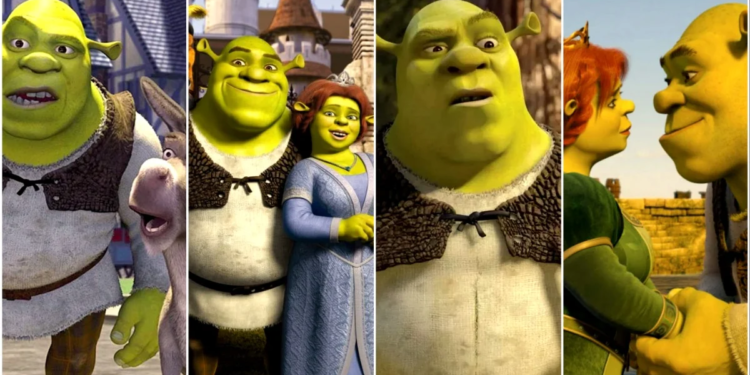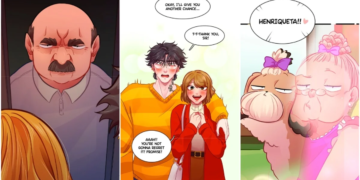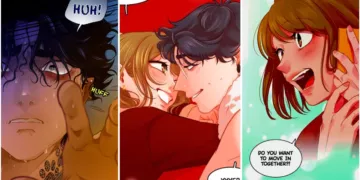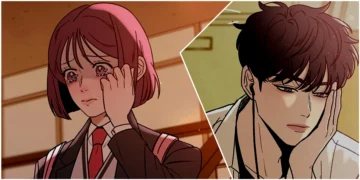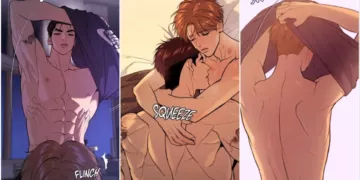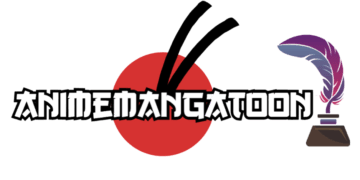We all know about Disney and their movies, from the star-crossed lovers to the pretty damsels in distress needing a prince charming, we all know who this jab was at. (Sorry Anna!) Disney has covered all these scenarios and made our childhood memories. We all have grown up with Disney and their over-the-top but lovely movies made us all want a Prince Charming or a charismatic thief in our lives (way to go Rapunzel). However, how can fairy tales ever be reality? So Shrek came to the rescue and in this article, we will unravel how is Shrek a Disney parody!
How Shrek Lovingly Demolished the Disney Fairytale?
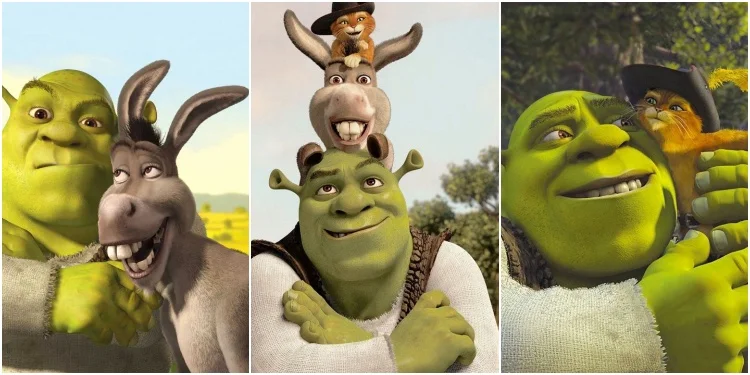
The world of animation felt comfortably familiar, largely dominated by Walt Disney studio. The studio has spent decades crafting a specific kind of magic: beautiful princesses, charming princes, singing animals, and the promise of a “Happily Ever After.” Then, stomping out of a swamp and straight into pop culture history, came Shrek. This wasn’t just another animated movie; it was a hilarious, smart, and surprisingly heartfelt rebellion. Produced by the relatively young DreamWorks Animation, Shrek didn’t just tell a fairytale. It took the entire Disney playbook, winked at the audience, and proceeded to lovingly tear pages out.
To truly appreciate the genius of Shrek’s humor, you have to understand the giant it was playfully jabbing. We all know the classic Disney formula, honed over generations. Films like Snow White, Cinderella, and Sleeping Beauty, later revitalized by hits like The Little Mermaid and Beauty and the Beast, gave us a blueprint: a good-hearted, often stunningly beautiful protagonist yearning for love or a better life; a villain driven by easily identifiable evil; cute animal companions offering silent support or chipper advice; a quest culminating in rescue and true love’s kiss; soaring musical numbers that wore their hearts on their sleeves; and that all-important, perfectly neat “Happily Ever After,” usually sealed with a wedding. It was a world of polish, predictability, and profound earnestness.
The Hero Who Just Wanted Everyone Off His Lawn
Forget the dashing Prince Charmings of the Disney-verse. Our hero, Shrek, is a large, green ogre who revels in his swampy solitude. He takes mud showers, uses earwax as candles, and finds solace in isolation. His defining characteristic isn’t bravery or nobility, but profound grumpiness. When his swamp is suddenly flooded with exiled fairytale creatures – thanks to the machinations of the tyrannical Lord Farquaad – Shrek’s motivation isn’t some higher calling. He’s just annoyed.
Shrek is sarcastic, emotionally walled off, and deeply aware of how the world judges him based on his appearance (“Ogres are like onions!”). Shrek is the ultimate anti-Disney prince. Yet, audiences fell in love with him because he was flawed, reluctant, and felt refreshingly real compared to the idealized male leads he was implicitly mocking. Shrek’s heroism emerges grudgingly, making it all the more satisfying when it finally appears.
The Princess Who Saved Herself (And Packed A Punch)
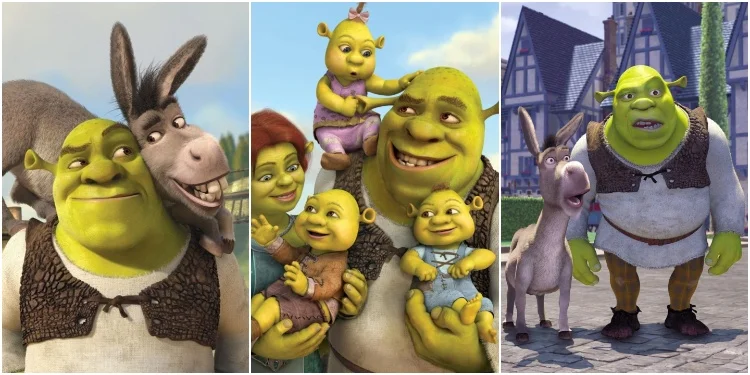
Classic Disney princesses often found themselves in passive roles, waiting for destiny or a prince to arrive. Think of Snow White keeping house for dwarves, or Aurora sleeping through her own story. While later princesses gained more independence, Fiona blew the doors off the trope.
Shrek finds her seemingly playing the part, waiting elegantly in her dragon-guarded tower. But her disappointment at Shrek’s entirely unromantic rescue quickly gives way to pragmatism and capability rarely seen in fairytale royalty. She knows the “rules” of fairytales but isn’t afraid to bend them. And let’s not forget her stunning martial arts display against Monsieur Hood and his Merry Men, proving she’s no damsel needing constant distress management.
The masterstroke, however, is Fiona’s curse: princess by day, ogre by night. This tackles Disney’s deep-seated emphasis on conventional beauty head-on. The cure, “true love’s kiss” leading to “true love’s form,” sets up an expectation: she’ll become permanently beautiful. Shrek delivers the ultimate subversion. When Shrek, an ogre, provides that kiss, her “true form” is revealed to be… an ogre. This powerful ending rejects the idea that happiness and worth are tied to looking a certain way. Fiona finds love and acceptance as her authentic, unconventional self, burps and all.
The Villain You Could Step Over (Shrek A Disney Parody)
Disney villains tend to be figures of imposing dread – think Maleficent’s towering rage or Ursula’s insidious bargains. Lord Farquaad, the ruler of the obsessively perfect kingdom of Duloc, is… hilariously short. His ambition and cruelty are textbook villainy, but his Napoleon complex, driven by his comically small stature, makes him more pathetic than terrifying. He’s a punchline in elaborate robes.
His kingdom, Duloc, feels like a direct shot at the hyper-controlled, sanitized environment of a Disney theme park. It’s unnervingly clean, eerily symmetrical, and filled with mascot characters, informational recordings, and that relentlessly cheerful “Welcome to Duloc” song – a clear parody of the repetitive earworm “It’s a Small World.” Farquaad’s rounding up and banishment of fairytale creatures feels like a critique of corporate homogenization, scrubbing away the weird, messy bits of folklore to create a blandly perfect, marketable product. Even his name seems engineered for Snickers, adding another layer of juvenile, anti-authoritarian humor.
Sidekick Who Never Learned the Meaning of “Quiet”
Forget the gentle chirps of Jiminy Cricket or the cute antics of Flounder. Enter Donkey, voiced with boundless energy by Eddie Murphy. Donkey embodies the antithesis of the adorable, minimally verbal Disney sidekick. He is relentlessly talkative, speaks in modern slang, makes endless pop culture references, and often drives Shrek absolutely bonkers.
His bond with Shrek isn’t instant loyalty; it’s forged through arguments, shared danger, and genuine, often begrudging, affection. The donkey feels like a real, if exaggerated, friend – sometimes supportive, sometimes irritating, always present. His character arc, including his bizarrely charming romance with the much larger Dragon, pushes comedic boundaries far beyond the safe territory Disney usually occupied.
Flipping the Fairytale Script (Shrek A Disney Parody)
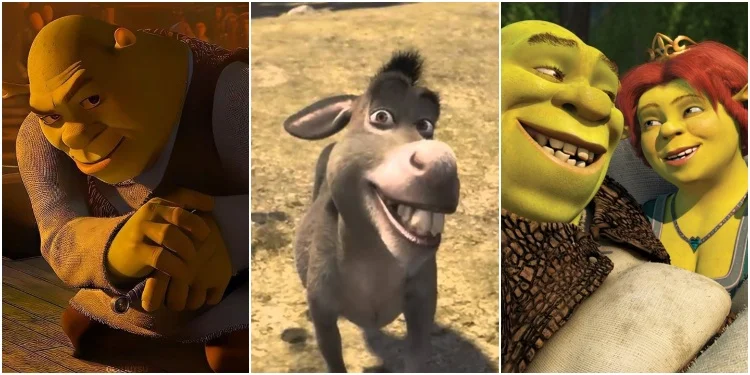
Shrek gleefully grabs familiar fairytale elements and twists them into comedic gold, making Shrek a Disney parody.
Okay, so forget the usual fairytale fluff. This story treats rescuing someone like a business deal, not a love story. That “true love’s kiss” moment? It’s more about accepting yourself than some magical change. And those fairytale creatures you know? They’re not wondrous, just kinda down-on-their-luck refugees, treated like pests. Even the Magic Mirror’s a sleazy game show host. Forget fancy singing; it’s usually mocked, like when Fiona’s duet goes boom. Instead of big orchestras, it’s all about pop and rock anthems – think Smash Mouth at a swamp party instead of a royal ball.
The visual language speaks volumes. Shrek’s swamp is organic, messy, and real. Duloc is sterile, artificial, and oppressively perfect. The character designs themselves, particularly Shrek and ogre Fiona, celebrate the unconventional. The film’s overall attitude is cynical, witty, and saturated with contemporary references, often flying right over kids’ heads to land squarely with the adults. It’s a humor that feels sharper, faster, and more daring than its Disney counterparts.
The Shadow of Rivalry: The Katzenberg Connection?
We can’t talk about Shrek’s digs at Disney without mentioning the industry context. DreamWorks co-founder Jeffrey Katzenberg was a former Disney executive who had overseen huge animation hits before leaving the company on reportedly bad terms with then-CEO Michael Eisner. Many saw Shrek as Katzenberg’s cinematic revenge. Lord Farquaad’s diminutive stature and massive ego were widely interpreted as a caricature of Eisner. Whether intentional or not, this behind-the-scenes drama adds an extra layer of delicious irony to Shrek’s sharp satire.
Redefining Happily Ever After, Ogre Style
Shrek remains a titan of animation not just for its laughs, but for its intelligent and thorough deconstruction of the Disney fairytale machine. It took every beloved element – the hero, the princess, the villain, the sidekick, the music, the happy ending – and flipped it, twisted it, and served it back with a wink and a burp.
By centering its story on a grumpy ogre, a princess who fights back, a joke of a villain, and a sidekick who won’t shut up, Shrek challenged decades of animated tradition. It swapped idealized romance for messy reality, orchestral grandeur for rock anthems, and perfect beauty for the radical idea that maybe, just maybe, “happily ever after” looks less like a palace ball and more like finding peace and acceptance in your own swamp, surrounded by the equally weird friends who love you. Shrek didn’t just parody the fairytale; it rewrote the rules, proving that even an ogre could leave a lasting mark on how we tell stories.
What do you think of Shrek a Disney parody? Subscribe to AnimeMangaToon to read more fascinating reviews and popular webtoon recommendations!

